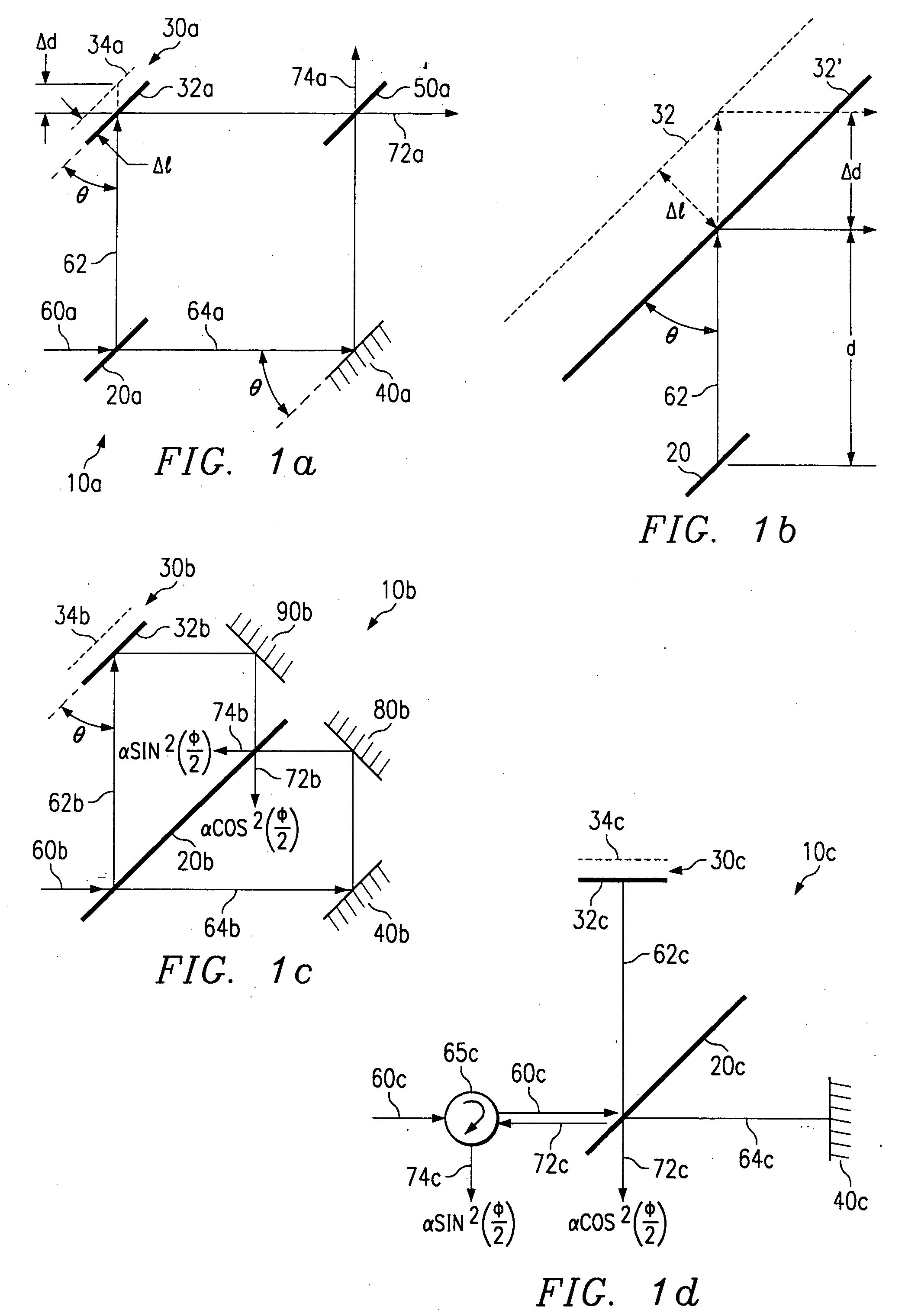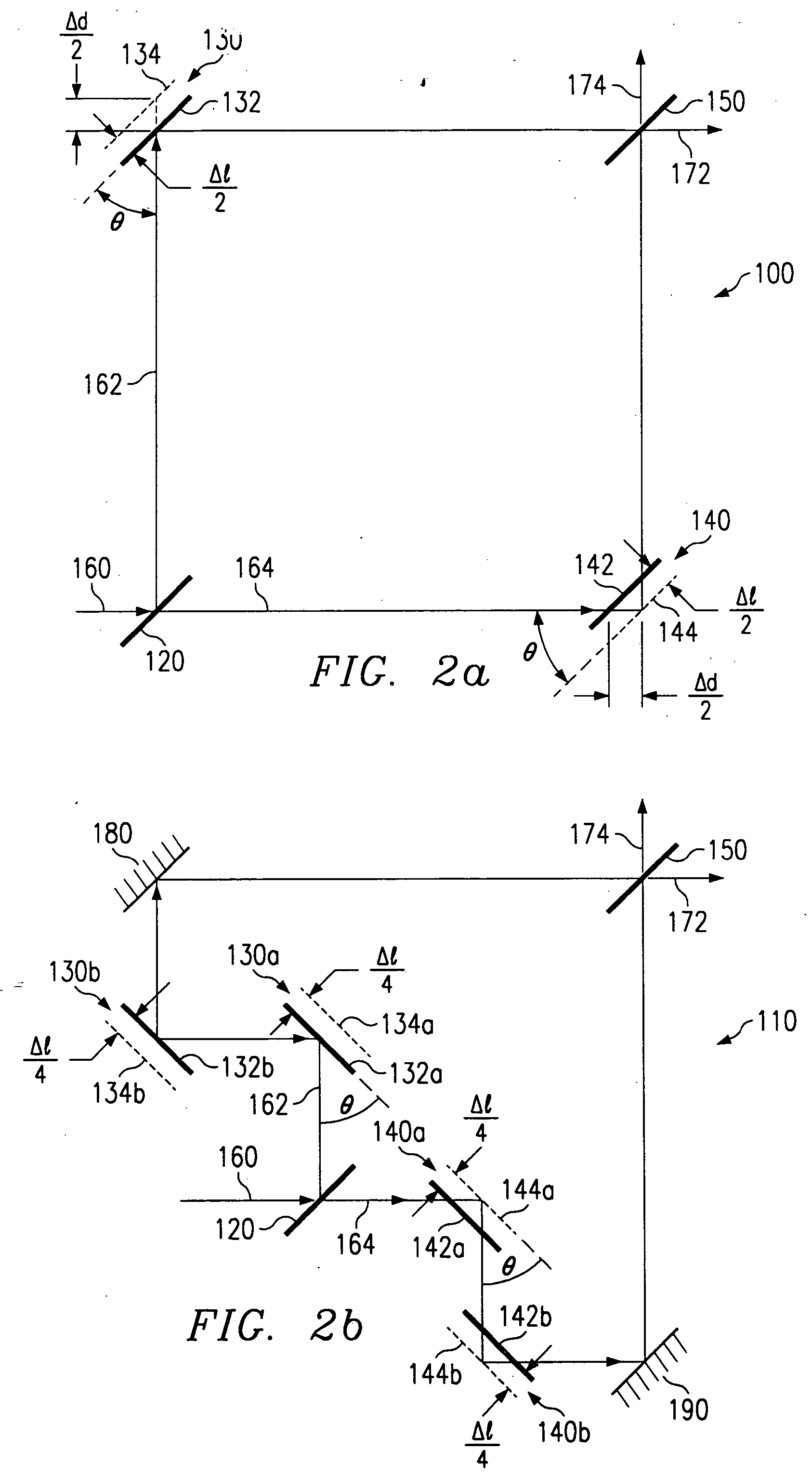Apparatus and method for controlling polarization of an optical signal
a technology of optical signal and apparatus, applied in the field of communication systems, can solve the problems of inability to control the polarization state of optical signal, inability to accept any pulse broadening, intersymbol interference, etc., and achieve the effect of reducing or eliminating at least some shortcomings and facilitating control of optical signal polarization
- Summary
- Abstract
- Description
- Claims
- Application Information
AI Technical Summary
Benefits of technology
Problems solved by technology
Method used
Image
Examples
Embodiment Construction
I. Building Blocks for High Speed Optical Signal Processing
[0058]FIG. 1a is a block diagram of one exemplary embodiment of an apparatus 10a operable to provide high speed optical signal processing. Throughout this document, the term “signal processing” includes attenuation, switching, phase shifting, polarization control, mitigation of polarization mode dispersion, or any other manipulation of one or more optical signals.
[0059] Apparatus 10a includes a beam splitter 20a, which communicates with mirrors 30a and 40a. Beam splitter 20a may comprise any structure or combination of structures operable to pass a first copy of an optical signal in one direction and a second copy of the optical signal in another direction. For example, in a particular embodiment, beam splitter 20a may comprise a partially silvered mirror. As another example, beam splitter 20a may comprise a mirror having one or more layers of a dielectric coating. As still another example, beam splitter 20a may comprise a ...
PUM
 Login to View More
Login to View More Abstract
Description
Claims
Application Information
 Login to View More
Login to View More - R&D
- Intellectual Property
- Life Sciences
- Materials
- Tech Scout
- Unparalleled Data Quality
- Higher Quality Content
- 60% Fewer Hallucinations
Browse by: Latest US Patents, China's latest patents, Technical Efficacy Thesaurus, Application Domain, Technology Topic, Popular Technical Reports.
© 2025 PatSnap. All rights reserved.Legal|Privacy policy|Modern Slavery Act Transparency Statement|Sitemap|About US| Contact US: help@patsnap.com



